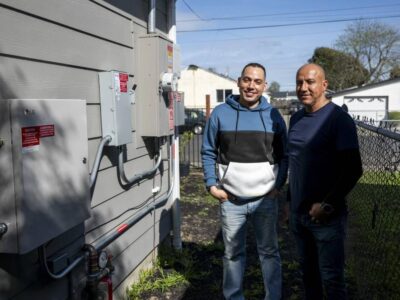Electricity prices constantly fluctuate, but for many hard-working Americans the ability to keep costs as low as possible – while not wasting energy – is imperative. You probably wouldn’t think lowering power bills would get a holiday. Join us as we prepare you for National Cut Your Energy Costs Day on Jan. 10.
The Canadian Energy Efficiency Alliance created the observance. The message about saving money resonated in the U.S. and U.K. and has helped garner a lot more public awareness about reducing electricity usage.
Many publications agree on the best strategies to trim the money spent on power. These efforts involve weatherproofing your home, replacing old windows and furnaces with energy-efficient models, taking shorter showers, doing laundry and running the dishwasher with full loads, and using solar heat to warm up the house. All these steps can save you a good deal of money, while also supporting the planet.
Heating and cooling systems in homes typically consume the most energy. Set the thermostat at a nominal level to keep your HVAC costs low. Find the perfect balance between comfortably warm and collectively chill. PuroClean, a property damage assessment firm, says homeowners should keep the thermostat between 68 to 78 degrees, depending on the season.
In addition, consumers should consider investing in a programmable thermostat as the installation will allow your home or apartment to be heated or cooled when you see fit. As a reminder, if you let the HVAC system run all day, you may generate a higher cost on your utility bill.
Household appliances can use a lot of electricity, so it’s essential to ensure yours are efficient. Many come standard with the blue Energy Star logo.
Today, most fridges, freezers, washers/dryers, and dishwashers are more energy-efficient than ever before. If you rent an apartment, odds are the property management team has upgraded each unit.
However, homeowners face a different challenge. Some older homes have antiquated appliances. To maximize their savings, owners should try to replace as many machines as possible.
You might have heard a parent repeatedly say this next step: “If you’re not using the room, turn off the lights.” Also, turn all of them off when you are out of the house, and try to use LED light bulbs. These lights last three years longer than compact fluorescent bulbs.
Likewise, unplug any devices you are not actively using. Computers, DVD players, kitchen appliances, and other household devices use electricity when connected to outlets. You can cut your bill by simply unplugging them.
Using less water is also a key way to cut down on power costs. It takes a lot of electricity to heat water for the shower, not to mention just to pump it through the spout.
Taking shorter showers helps dearly. If you’re unsure how long you usually spend in the shower, time your next one. See if you can reduce your time and water usage by a minute. Don’t run the sink while shaving or brushing your teeth; it’s wasteful in many facets.
Weatherproofing is a great way to keep energy costs low. Seal up any cracks by your windows, reducing drafts and blocking outside air. Put down door blocks under the spaces under doors. In the summer, open your windows at night to let your house cool off naturally. New windows can help reduce your bill. Adding solar control film to block solar heat will also cut down on the reliance on air conditioning.
When National Cut Your Energy Costs Day comes around, remember how important it is to save electricity. It’s not only good for the environment, but it’s good for your wallet.





